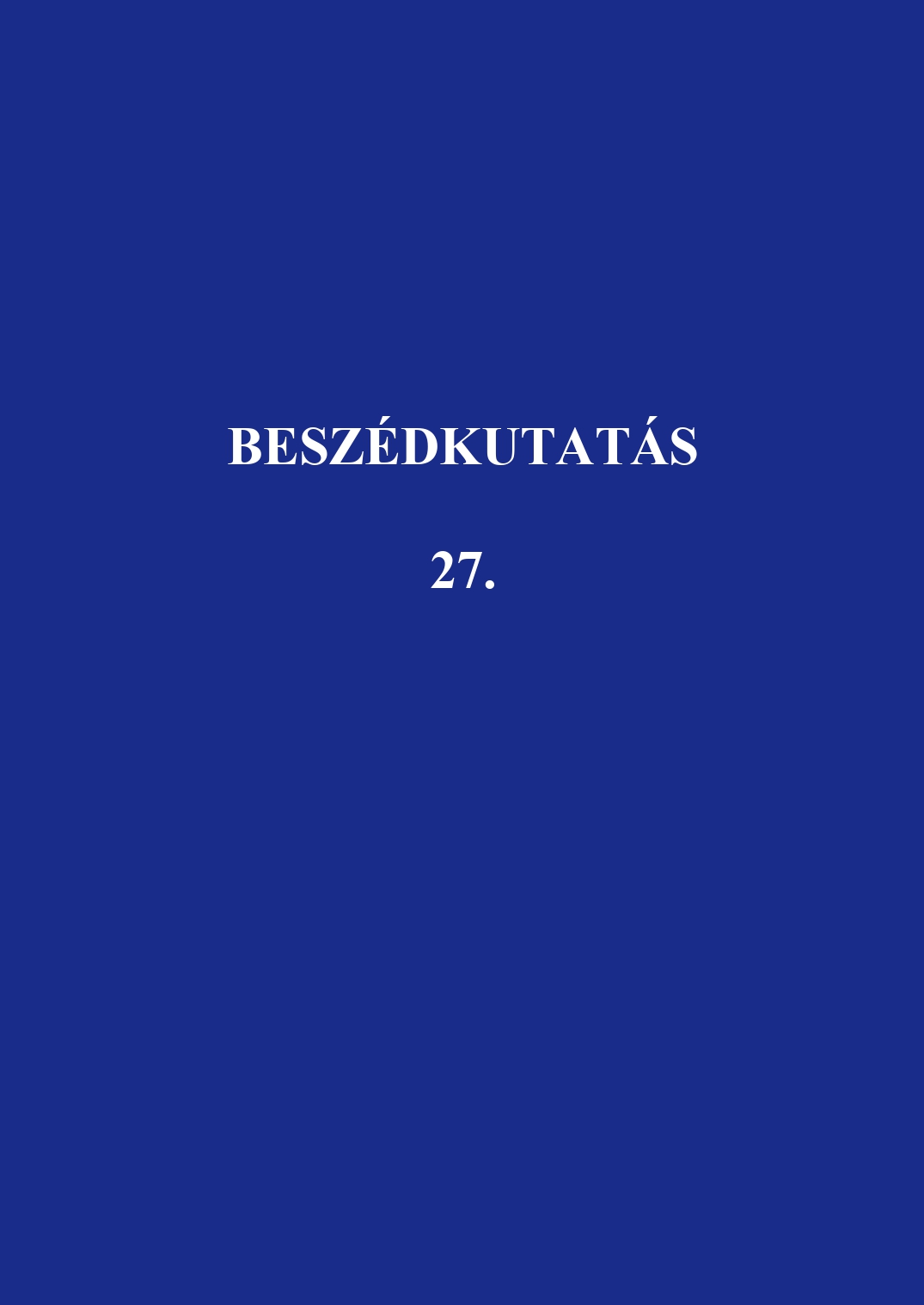A dajkanyelv temporális jellemzői 4 és 8 hónapos csecsemőkhöz szóló beszédben
Abstract
The temporal characteristics of motherese directed to 4 and 8 month-old children
Infant-directed speech (IDS) is typically characterized by slower speech rate compared to adult-directed speech (ADS). Whether final lengthening is disproportionally exaggerated in IDS vs. ADS relative to the global speech rate still remains a controversial issue. The present study aims to investigate the temporal characteristics of Hungarian infant-directed read speech. Results show that mothers spoke slower in IDS vs. ADS. The duration of the last three (the ultimate, the penultimate, and the antepenultimate) syllables in IDS vs. ADS differed significantly by being substantially longer. However, the duration ratios of the last, the last two or last three syllables compared to the rest of the utterance were independent of directedness (IDS vs. ADS). Findings suggest that IDS is characterized by an overall lower articulation rate compared to ADS but, contrarily to some earlier findings, the final syllables did not extend disproportionally in IDS. Thus the boundary marking role of utterance-final syllables was not exaggerated by mothers addressing infants.
A Beszédkutatásba leadott tanulmányokat máshol változatlan formában megjelentetni nem lehet. Más személy a szerkesztőbizottság engedélyével és megfelelő hivatkozással használhat fel ábrákat a publikált tanulmányokból.





